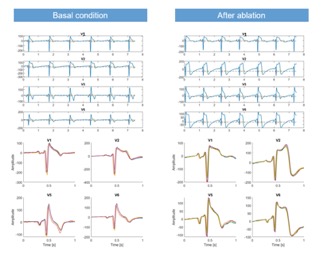
Topic:
In recent years, Brugada syndrome has increasingly assumed greater importance in the clinical
setting given the high number of young people between 30 and 40 years of age who have died due to it. The cause of this syndrome is not entirely clear but is attributed either to a rapid inactivation of sodium channels or to the presence of a structural abnormality in the right ventricle with the presence of a replacement fibro-adipose tissue. By studying the electrical activity of the heart, it is possible to determine the presence of the syndrome in the patient and to define the stage in which it is present. This research line is focused on the quantitative analysis of the electrocardiogram signal (ECG) and the specific pattern of this syndrome (such as the ST wave elevation), considering the variation of these features during different conditions: basal conditions and after ablation.